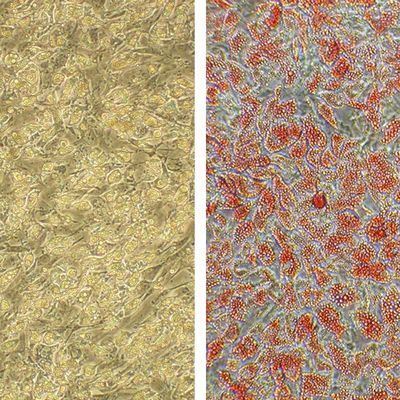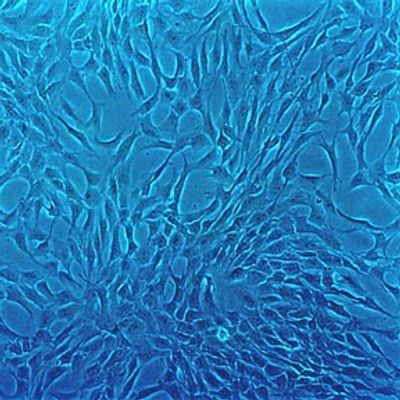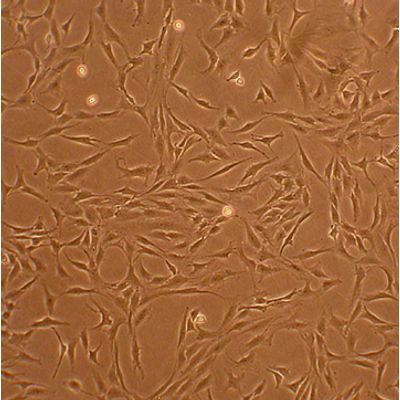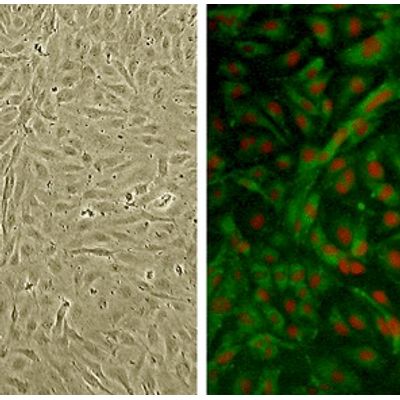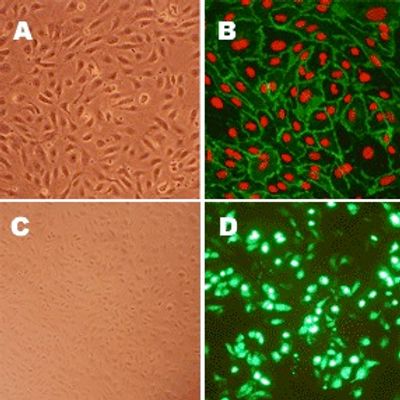

Cell Applications, Inc.
5 products found
Cell Applications, Inc. products
Primary Cells - By Cell Type
Human Adipocytes: HAd
Mature Human Adipocytes (HAd) are differentiated from HPAd (Human Preadipocytes) through the use of Adipocyte Differentiation Medium. Cells are shipped 5 days after initiating differentiation. Mature HAd are expected 10 days after induction of differentiation and should remain healthy and responsive for at least 2 weeks after complete differentiation. Adipose mass can be controlled by inhibition of HPAd differentiation and increase of lypolysis. HAd serve as an ideal cellular model for adipogenesis and drug discovery research in the area of obesity and diabetes. Differentiated HAd from Cell Applications, Inc. have been used to identify genetic elements responsible for aromatase production (and consequently, elevated plasma estrogen) in postmenopausal breast cancer patients.
Primary Cells - Chondrocyte
Human Chondrocytes: HC
Human Chondrocytes (HC) are derived from normal human articular cartilage, where they produce and maintain the extracellular matrix of cartilage, including type II collagen. Used widely in research, the cells are a gold standard control for cellular reprogramming and differentiation. Chondrocytes grown in monolayer culture on a solid surface tend to lose their phenotypic markers, no longer produce Collagen type II and sulfated proteoglycan, and de-differentiate to a fibroblast-like phenotype. In order to regain phenotypic characteristics, de-differentiated chondrocytes should be re-differentiated by encapsulating in alginate beads using the Chondrocyte Differentiation Kit (Cat# 072K).
Human Chondrocytes: Osteoarthritis: HC-OA
Human Chondrocytes Osteoarthritis (HC-OA) are derived from human articular cartilage of donors with OA. Osteoarthritis is an inflammatory disease characterized by increased degradation of cartilage tissue in the joint due to overproduction of enzymes degrading the extracellular matrix. Despite the initial proliferation and activation of chondrocytes, they are not able to efficiently repair the degrading cartilage. Instead, chondrocytes undergo terminal differentiation and eventually apoptose, leading to mineralization of cartilage in a process resembling bone formation during development. Thus, HC-OA provide a useful model to study changes in chondrocyte biology in response to abnormal environment of the OA joint. HC-OA from Cell Applications, Inc. have been used to demonstrate that THF-alpha activates transcription of ADAMTS-4, a metalloproteinase implicated in cartilage degradation in OA, via p38-MAPK-dependent mechanism.
Primary Cells - Endothelial
Human Brachiocephalic Artery Endothelial Cells: HBcAEC
Human Brachiocephalic Artery Endothelial Cells (HBcAEC) along with human aortic (HAOEC), carotid artery (HCtAEC), coronary artery (HCAEC) and subclavian artery (HScAEC), all from Cell Applications, Inc., have been used to demonstrate that not only blood vessels from different tissues are highly heterogeneous, they also interact differently with leukocytes during the inflammation response. The authors further showed that differential N-glycosylation of commonly expressed vascular adhesion molecules may be responsible for this heterogeneity, as well as for modulation of signaling under resting and activated inflammatory conditions. This also explains why specific vascular beds may be more or less susceptible to particular diseases or stimuli.
Human Aortic Endothelial Cells: HAOEC
Human Aortic Endothelial Cells (HAOEC) provide an excellent model system to study all aspects of cardiovascular function and disease, and they have been utilized in dozens of research publications to study diabetes-associated complications related to cardiovascular function, investigate mechanisms of immune response and graft rejection, study endothelial dysfunction caused by air pollution, oxidative stress and inflammation, and develop 3d endothelialized engineered tissues, as well as new technologies based on novel material surfaces and drugs in order to reduce risks associated with vascular implants. Select HAOEC lots have been additionally tested to demonstrate stimulation-dependent angiogenesis and key endothelial cell signaling pathways (phosphorylation of VEGFR, Akt, MAPK, and expression of Tie2, eNOS, Axl and Etk/Bmx). More information about pre-screened endothelial cells can be found on the Pre-Screened Endothelial Cell Product Page.

